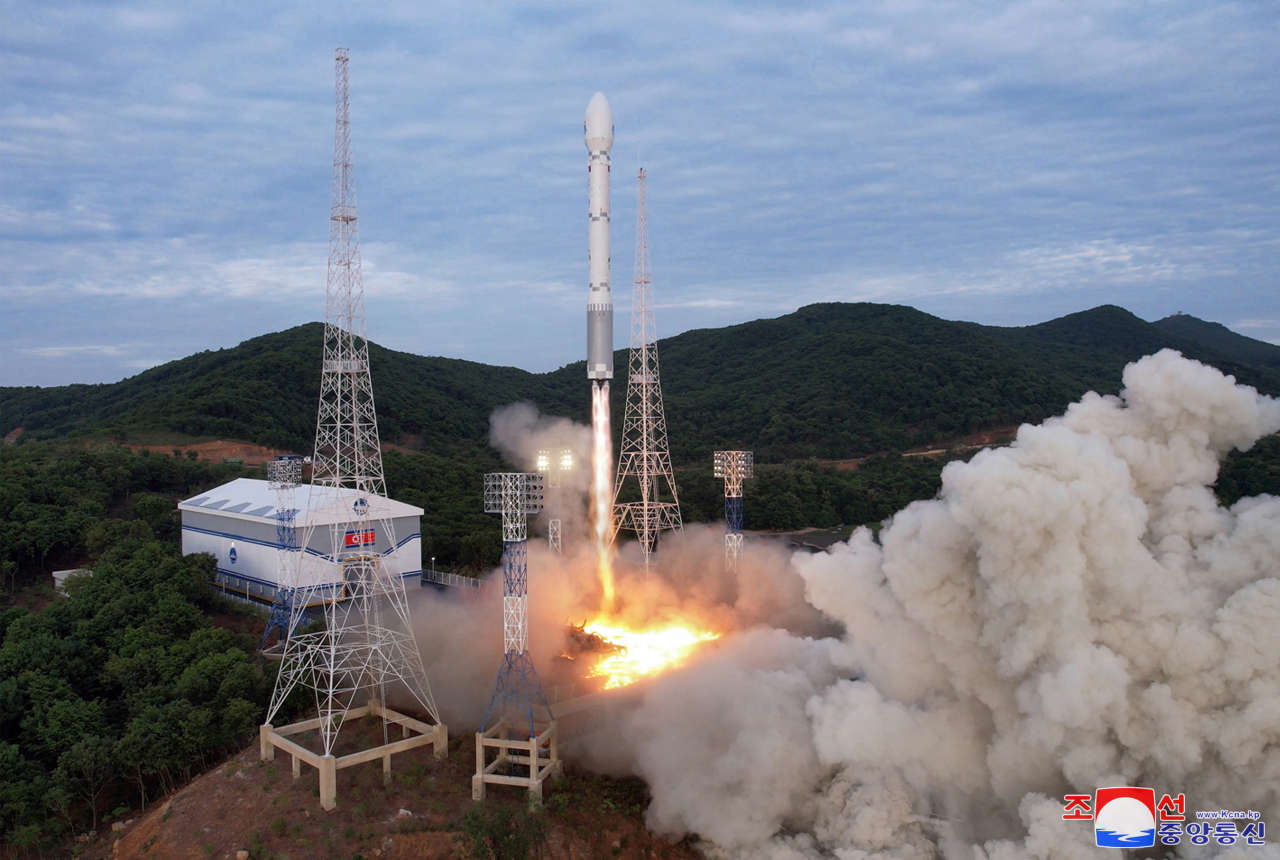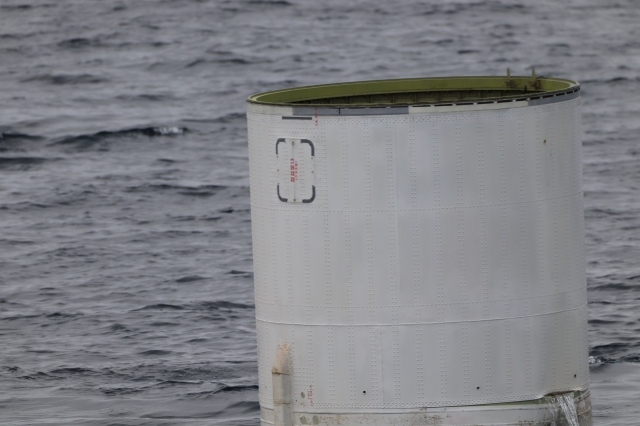
The South Korean defense minister said Thursday that the military was conducting a salvage operation for a segment of a North Korean space launch vehicle believed to be from the second stage of propulsion, and was tracing remaining debris from the projectile a day after the launch ended in failure.
Speaking before the National Assembly’s national defense committee, Defense Minister Lee Jong-sup said it is looking into the possibility of retrieving the reconnaissance satellite that North Korea has reportedly loaded onto this projectile.
"(If the projectile) follows a normal flight trajectory, we can predict the separation of the first stage and the flight distance as well as the impact point of the second and third stages. However, if it deviates abnormally, the predicted portions are non-existent, making it a situation that we now need to locate," he said.
It is reported that the satellite, engine and fuel tanks of the North Korean space launch vehicle named the Chollima-1 rocket crashed except for the first stage propulsion engine.
The Joint Chiefs of Staff also said the section of the space launch vehicle’s fuselage was found lying horizontally at a depth of 75 meters in the sea. The JCS estimates the length of the fuselage to be approximately 15 meters, with a diameter of around 2 to 3 meters.
An official from the JCS said the photo released a day earlier depicted a part of the upper part of the space launch vehicle, and there are "additional submerged parts still beneath the water." On the previous day, military authorities released photos of both the exterior and interior of an object that was salvaged from the site.
Early on Wednesday, North Korea fired a projectile it claimed to be a space launch vehicle southward from the area of Tongchang-ri, North Pyongan Province, at around 6:29 a.m. It flew over a far western part of the South Korean island of Baengyeongdo in Incheon, and landed about 200 kilometers west of the island of Eocheongdo.
At approximately 8:05 a.m. the same day, a South Korean Navy ship salvaged a portion of a projectile launched by North Korea. The retrieved object is described as a hollow cylinder connecting the first and second stage propellants.

The JCS said the Navy’s divers have been involved in the salvage operation since the previous day, citing challenges such as “poor visibility and limited working time underwater.” The Navy will “add additional submarine rescue ships capable of saturation diving” in consideration of various safety factors, the JCS added.
A day after the failed launch of the first space launch vehicle, North Korea publicly released images of the launch through state media channels.
North Korea’s state-run Korean Central News Agency released two photos capturing the launch of the Chollima-1 rocket carrying North Korea’s first reconnaissance satellite. The KCNA is primarily intended for a foreign readership.
The photos show the rocket blasting off at a satellite launching site in Chosan County, North Pyongan Province. Notably, the launch site facing the sea is presumed to be a new facility rather than the existing Seohae Satellite Launch Center. North Korea had been constructing a new launch site on a beach about 3 kilometers away from the existing launch site, although the construction had not been completed until recently.
During a closed-door session of the National Assembly's intelligence committee, the National Intelligence Service disclosed that one possible reason for the launch failure may have been the “rushed execution of the launch,” while the construction of the launch site was still incomplete.
Meanwhile, the defense minister said the failed launch would amount to a UN Security Council resolution violation.

“North Korea attempted a launch of ‘space projectile’ that it claims to be carrying a satellite. This constitutes a grave violation of the UN Security Council’s resolution, and a clear provocation threatening peace and stability on the Korean Peninsula and in the international community,” he said.
He said Wednesday’s provocation once again went on to show that the “most pressing security threat” facing the country remained North Korea’s missiles and nuclear weapons.
The minister added that it was possible for another launch to occur. “While it’s difficult to predict precisely at this point, I think there is a possibility it would take place within the timeframe that North Korea indicated,” he said.
Earlier this week, North Korea informed the International Maritime Organization that it would be launching a satellite between May 31 and June 11. Ri Pyong-chol, a top North Korean military official, said in a statement reported by state media that the launch was slated for June.
The South Korean defense minister, responding to an opposition lawmaker’s question, said he believes the military “did a good job during and after the launch” working with municipalities and government ministries in the operation of the public warning system.
The attempted launch on Wednesday led to emergency alerts being issued across Seoul, including an evacuation alert, which was later declared a false alarm and retracted.
“I think we did a good job coordinating with municipalities, and measures were taken according to due procedure,” Lee said.





